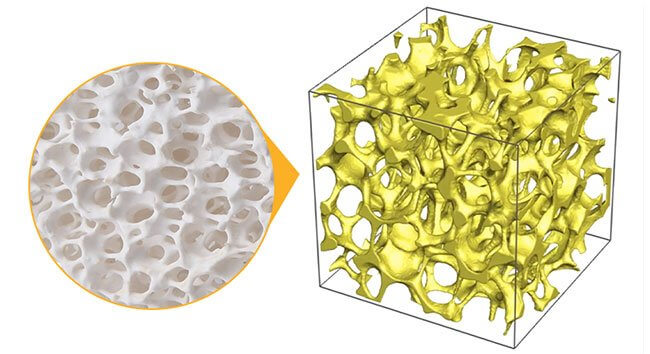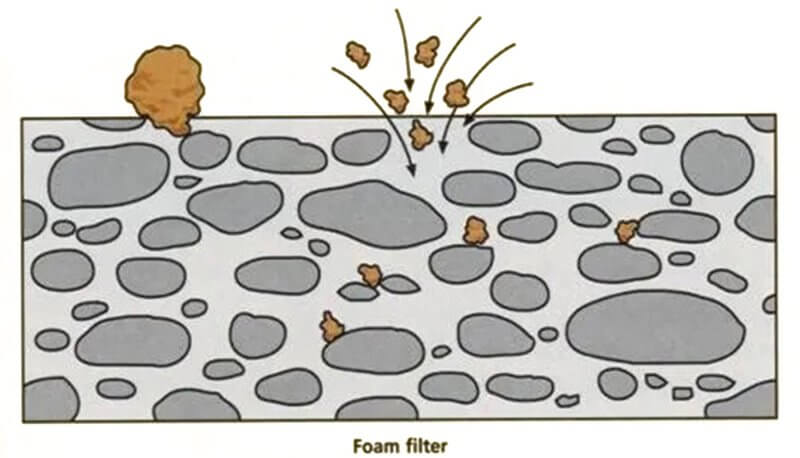Introduction:
The metal casting industry plays a vital role in manufacturing various products, ranging from automotive components to aerospace parts. The quality of the final castings depends on several factors, with one crucial aspect being the removal of impurities from the molten metal. Alumina Ceramic Filters have emerged as an innovative solution to enhance the efficiency and quality of metal casting processes. In this essay, we will delve deeper into the features, benefits, applications, and manufacturing processes of Alumina Ceramic Foam Filters.
Features and Composition of Alumina Ceramic Filters:
A. Alumina Ceramic Material:
Aluminum Oxide (Al2O3): Alumina, a type of aluminum oxide, serves as the primary component of ceramic foam filter plates due to its exceptional high-temperature stability, chemical resistance, and mechanical strength.
Purity Levels: Alumina ceramic filters are available in different purity levels, typically ranging from 70% to 99.8%. Higher purity levels offer improved filtration efficiency.
B. Porous Structure:
Three-Dimensional Lattice Configuration: The filter plates feature an interconnected, open-cell structure with a three-dimensional lattice configuration. This design allows for the passage of molten metal while efficiently trapping and removing impurities.

Customizability: Filter plates can be tailored to specific casting requirements, allowing for customization of pore size, thickness, and shape.
Filtration Mechanism of Alumina Ceramic Ceramic Filters:
A. Mechanical Filtration:
Particle Size Exclusion: The porous structure of the filter plates effectively traps larger impurities, including oxides, slag, non-metallic inclusions, and solidified mold material.
Homogeneous Flow: The filter plates help promote a more uniform flow of molten metal, reducing turbulence and enhancing casting quality.
B. Adsorptive Filtration:
Chemical Interaction: Alumina ceramic material interacts chemically with certain impurities, adsorbing them onto the filter surface and preventing their passage through the filter.
Improved Filtration Efficiency: Adsorptive filtration enhances the overall filtration capacity, enabling the removal of smaller impurities and further improving the quality of castings.

Advantages and Benefits of Alumina Ceramic Filters:
A. Improved Casting Quality:
Reduced Impurities: Alumina ceramic foam filters significantly reduce impurities in the molten metal, leading to higher casting quality, improved mechanical properties, and reduced defects in the final product.
Clean Metal Flow: By effectively removing impurities, these filters enable the production of clean and homogeneous molten metal, enhancing the integrity and consistency of castings.
B. Enhanced Efficiency:
Optimal Flow Characteristics: Alumina Ceramic Foam filters contribute to improved flow characteristics during the casting process, ensuring consistent and controlled metal flow and reducing the likelihood of turbulence and misruns.
Reduced Casting Defects: The filters help minimize defects such as gas porosity, sand inclusions, and surface defects, resulting in a higher yield of acceptable castings.
C. Thermal Shock Resistance:
High-Temperature Stability: Alumina ceramic filters exhibit remarkable resistance to thermal shock, enabling them to withstand rapid temperature changes during the casting process.
Extended Service Life: This property ensures the longevity and reliability of the filter plates in demanding industrial environments, leading to cost savings and increased operational efficiency.
D. Versatility and Range of Applications:
Casting Processes: Alumina Ceramic Foam filters find applications in various metal casting processes, including steel, iron, aluminum, copper, and their alloys.
Casting Techniques: These filters are suitable for both gravity and low-pressure casting techniques, offering consistent filtration performance across different casting methods.
Manufacturing Process of Alumina Ceramic Filters:
A. Foam Preparation:
Polymeric Precursor Method: The foam is typically prepared using a polymeric precursor, which is impregnated with alumina slurry and then subjected to a thermal treatment process.
Cell Structure Control: The cell size and distribution within the foam can be controlled to achieve the desired filtration characteristics.
B. Ceramic Infiltration:
Slurry Infiltration: The prepared foam is immersed in an alumina slurry, allowing it to infiltrate the interconnected porous structure.
Binder Removal and Firing: The infiltrated foam is then subjected to a controlled heating process to remove the binder and sinter the alumina, resulting in a rigid ceramic foam structure.
Applications and Future Developments:
A. Steel Casting:
Inclusion Removal: Alumina ceramic filters effectively remove inclusions, ensuring high-quality steel castings with improved mechanical properties.
Filtration Efficiency: Ongoing research aims to enhance the filtration efficiency and performance of filters specifically designed for steel casting applications.
B. Aluminum Casting:
Dross Reduction: Alumina ceramic foam filters minimize the formation of dross, improving the yield and quality of aluminum castings.
Alloy Specificity: Research efforts focus on developing filter plates tailored to specific aluminum alloys, further optimizing casting results.
C. Advanced Casting Techniques:
Investment Casting: Alumina ceramic filters have shown promise in investment casting applications, enabling the production of intricate and high-precision castings.
Additive Manufacturing: The integration of Alumina Ceramic Foam Filters in 3D printing processes can enhance the quality and integrity of metal parts fabricated through additive manufacturing.
Environmental Considerations:
A. Sustainability:
Recycling and Reuse: Alumina ceramic filters can be recycled and reused, minimizing waste and reducing the environmental impact associated with their disposal.
Energy Consumption: The manufacturing processes of alumina ceramic foam filters require energy-intensive steps such as firing. Continued efforts are being made to optimize energy consumption and explore more sustainable production methods.
B. Waste Management:
Hazardous Waste: Proper disposal of used filters is crucial, as they may contain trapped impurities and trace elements that could be classified as hazardous waste. Compliance with waste management regulations is necessary to mitigate potential environmental risks.
Future Developments and Research Areas:
A. Filtration Efficiency Enhancement:
Material Modification: Researchers are investigating the use of additives and modifications to the alumina ceramic material to further enhance its adsorptive and mechanical filtration capabilities.
Surface Modification: Surface treatments and coatings are being explored to improve the interaction between the filter surface and impurities, enhancing the overall filtration efficiency.
B. Advanced Manufacturing Techniques:
3D Printing: The integration of additive manufacturing techniques, such as 3D printing, for fabricating alumina ceramic filters can provide more intricate and customizable designs, allowing for enhanced filtration performance.
Nanotechnology: The utilization of nanomaterials in the manufacturing of alumina ceramic foam filters holds promise for improved filtration efficiency and enhanced mechanical properties.
C. Optimization for Specific Casting Processes:
Tailored Design: Filters specifically designed for unique casting processes, such as investment casting or sand casting, are being developed to address the specific challenges and requirements of these methods.
Computational Modeling: The use of computational fluid dynamics (CFD) simulations aids in optimizing the placement and design of alumina ceramic filters within casting systems, ensuring optimal filtration efficiency.
Conclusion:
Alumina Ceramic Filters have revolutionized the metal casting industry by providing efficient impurity removal, enhancing casting quality, and improving process efficiency. With their unique composition, porous structure, and advanced filtration mechanisms, these filters have become indispensable tools in various metal casting processes. As research and development continue to advance, Alumina Ceramic Foam Filters will play a critical role in meeting the increasing demands of modern manufacturing, ensuring high-quality castings, and driving innovation in the metal casting industry.

